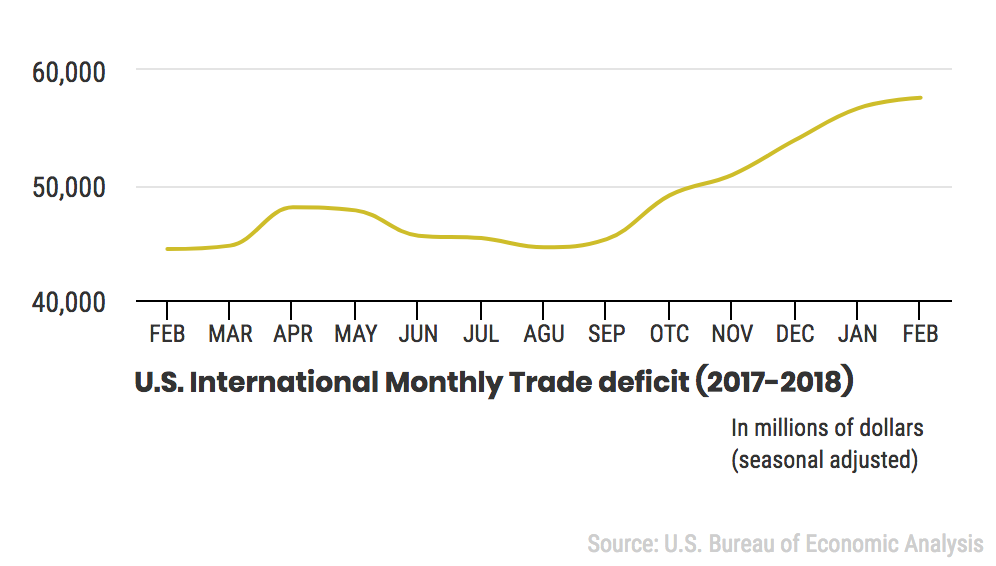WASHINGTON – The U.S. monthly trade deficit hit another high of $57.6 billion in February, the highest level since November 2008, the U.S. Bureau of Economic Analysis announced Thursday. But several experts say increased tariffs aren’t the solution.
The monthly deficit has grown $13.2 billion, or 29.7 percent, from February 2017, a month after President Donald Trump took office. The president has constantly vowed to eliminate America’s trade deficit through a combination of increased exports and reduced imports.
Trump, who has said repeatedly that the U.S. is being taken advantage of by its trading partners, slapped steep tariffs on imports of steel and aluminum after imposing similar tariffs on large washing machines and solar panels in January. The U.S. goods trade deficit with China, the world’s biggest solar panel producer, decreased 2.4 percent to $3.5 billion in February.
“Tariffs are important,” said Robert E. Scott, senior economist at Economic Policy Institute. “But they only have an insignificant impact on exports and the trade deficit.”
On Tuesday, the Trump administration outlined a list of Chinese goods that will be subject to around $50 billion in new tariffs. China hit back on Wednesday with proposed tariffs on $50 billion worth of American soybeans, cars, chemicals and other goods.
Experts say the size of the trade deficit is determined by macroeconomic forces including private savings and investment, government deficits and the exchange rate for the dollar rather than by trade conditions with individual countries.
Scott said the best way to reduce the trade deficit is to bring down the value of the U.S. dollar compared with currencies in countries like Japan, China and European nations.
Lucy Lu, a research analyst at the Peterson Institute for International Economics, said her analysis shows that the trade deficit grows when the net national borrowing goes up. As a country living on credit, when U.S. spends more than it earns, it borrows money from abroad and widens its trade deficit.
“As long as U.S. households or government does not reduce debt and increase savings, the US trade deficit is forecastable to grow,” said Lu.


